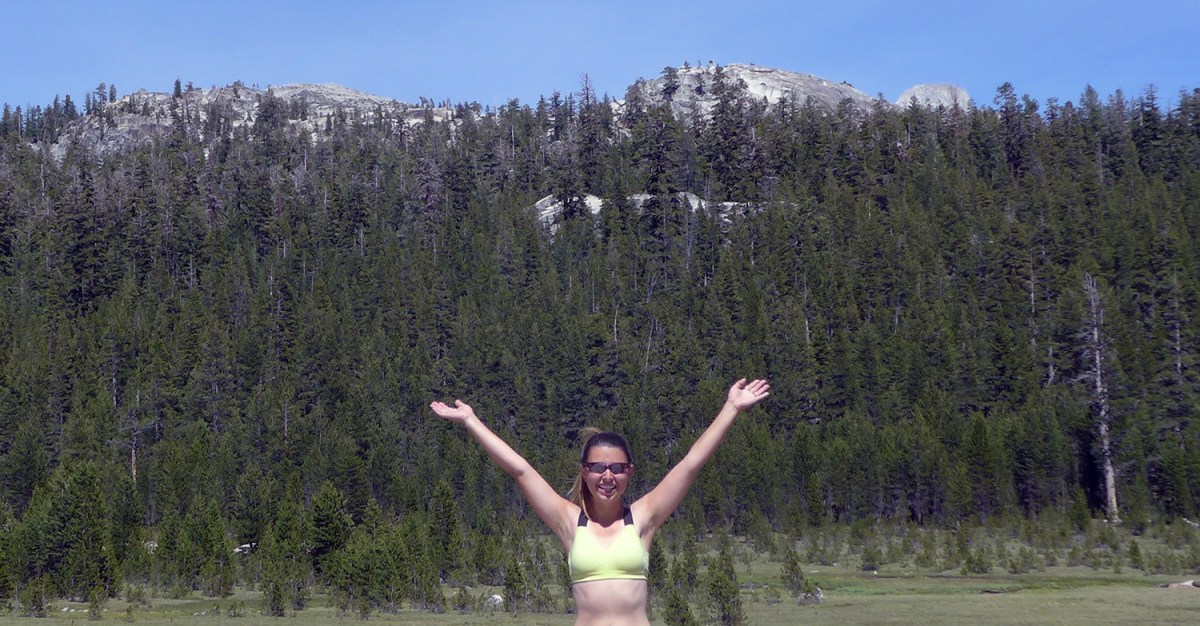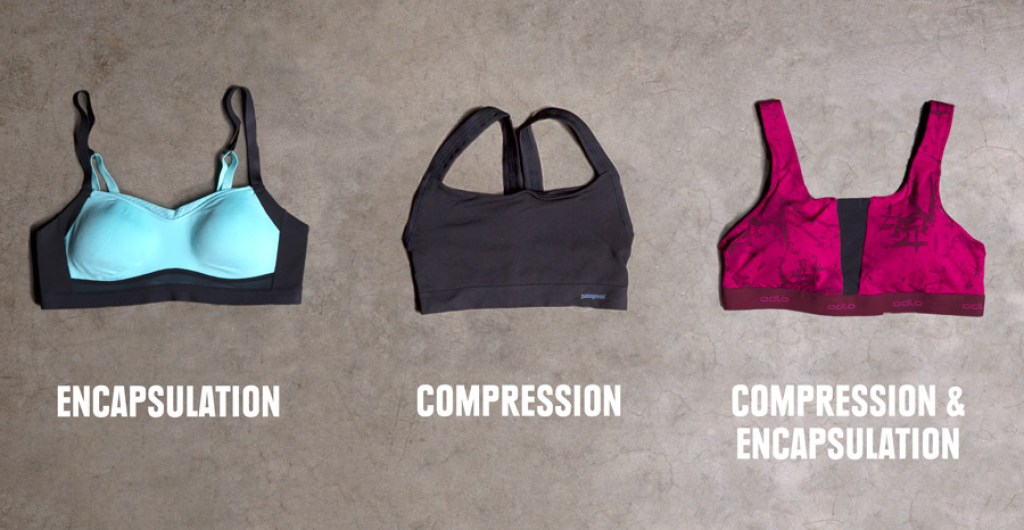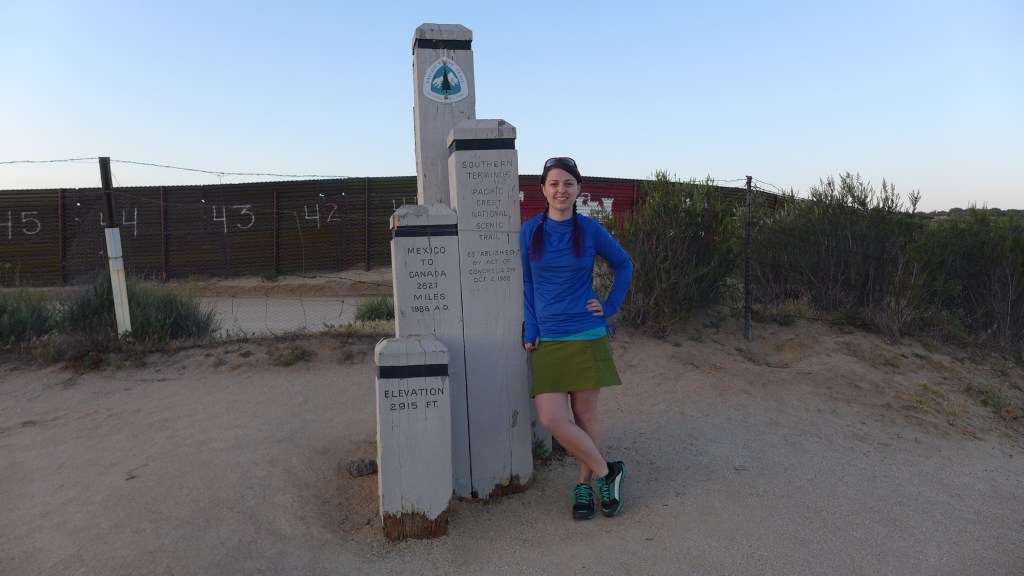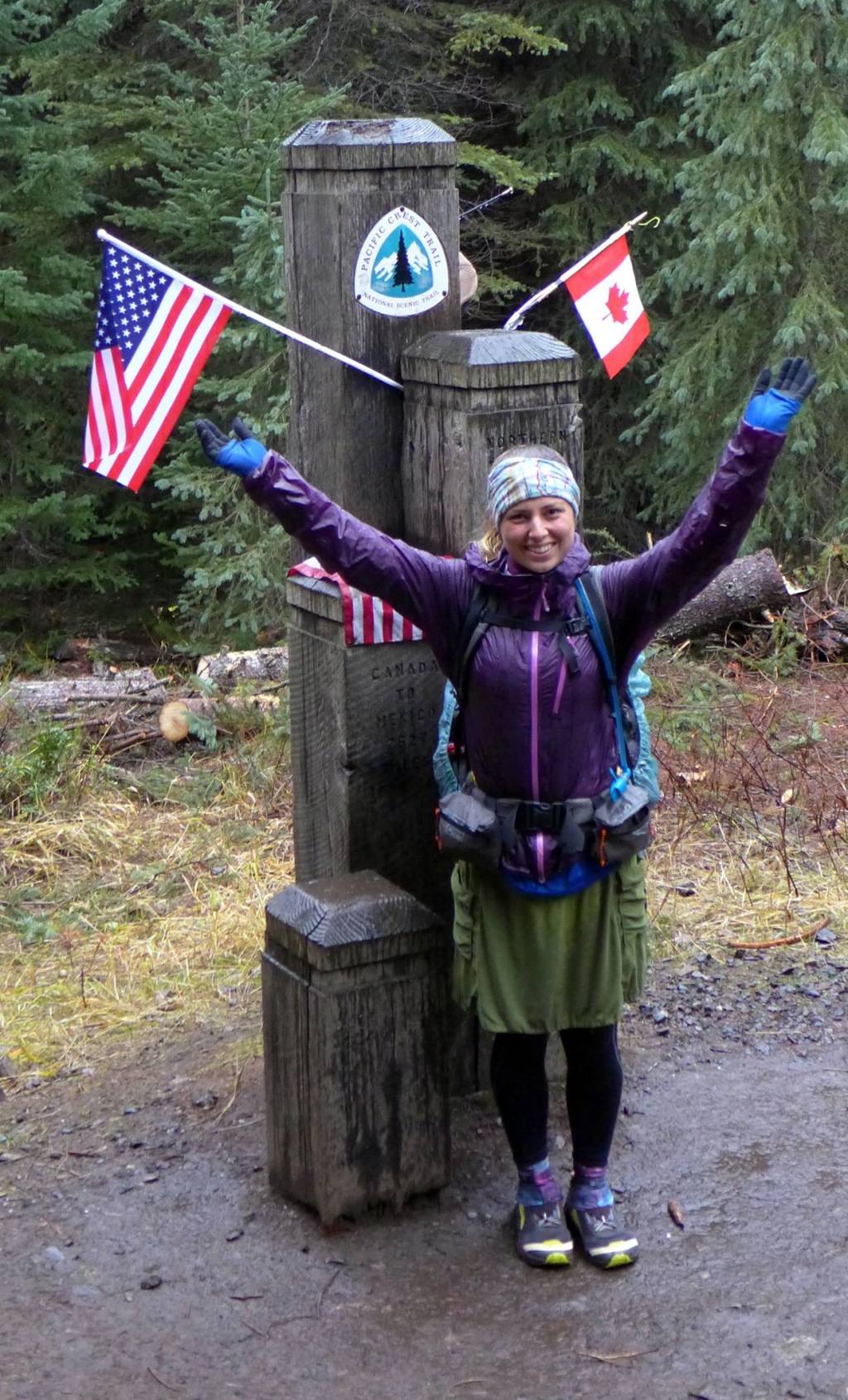I hiked the Pacific Crest Trail with one sports bra. Yes, one. For six months. Am I crazy? Probably. But that’s beside the point, which is that I searched for the perfect bra for months, and when I found it, it was all I needed.
Of course, I didn’t realize finding it was going to be such a problem. When planning a thru-hike, there are an overwhelming number of gear decisions to make: tent, sleep system, backpack, stove, food (oh, the food), even eating utensils. It took me nearly a year of research to land on the perfect kit. But the one piece of gear this gearhead didn’t anticipate stressing over? A bra.

Finding the right sports bra to hike the Pacific Crest Trail was more than the author bargained for. (Photo Courtesy: Ashley Brown)
A Brief History of Bras in Sport (aka, the Anti-Sports Bra)
Millennia ago, Greek sportswomen wrapped their breasts with cloth and leather bands, which may have been effective, but seems entirely uncomfortable. In the Dark Ages, women didn’t have to deal with such DIY compression because, well, they weren’t the ones jousting. From there, we moved to corsets, which is to say, we didn’t move at all for the next 500 years.
Another shift in the evolution of female undergarments came in 1911 when a “sports” corset debuted with elastic instead of metal, and in 1914 when, thanks to the popularity of tango, we saw a similar dance-specific model. When women began taking on more physical factory jobs during World War I, they, too, required more comfort and mobility and turned to brassieres, the first example of what we think of today as a traditional bra.
Fast-forward to 1966, when Roberta “Bobbi” Gibb ran the Boston Marathon in a tank-top bathing suit, a precursor to the jogging craze that hit the United States in the early 1970s. As more women laced up their trainers, more women encountered the pain and frustration of running without proper breast support. Finally, in 1977, Lisa Lindahl had had enough. She recruited her friend and costume designer Polly Smith, and together they deconstructed two jock straps and started sewing. The result? The Jogbra, the first modern-day sports bra.
Think about that: We put a man on the moon before we put a woman in a sports bra.
Picking the Right Sports Bra
Today, we have so many options, it’s overwhelming. (The global sports-bra market has ballooned over $7 billion.) Though every sports bra has the same purpose—to limit the movement of breasts during physical activity—it’s more complex than you’d think. Breasts have no muscle tissue and vary in size, shape and density from woman to woman. They move up, down, in, out, side to side—no wonder so many women experience pain during exercise (around 50 percent, according to a 2007 study by the University of Portsmouth).
Furthermore, “where the breasts are located is very complicated topology,” explains Dr. LaJean Lawson, a former researcher at Oregon State University who now consults with brands on sports bra research and development. “[The same] volume of breast, that shape that sits on the front of your chest can be high, low, they can be more outside, inside, down, things can be slanted, so even with the same cup volume, those breasts can be positioned and act very different on the body.”
Where to start when searching for a sports bra? First, think about the impact level, or the amount of force sent through the body when it hits the ground. Sports bras are often designed around a specific impact level: Yoga is generally considered low-impact, while running is high-impact.

- Compression bras: Best for lower-impact sports, these bras use stretch material to hold the breasts close to the body. (Check out the Patagonia Active Mesh.)
- Encapsulation bras: Best for medium-impact activities, these bras take their DNA from a traditional bra, featuring two distinct cups to isolate and hold the breasts in place. (Check out the Odlo Seamless High.)
- Combination bras: Best for the highest-impact disciplines, these bras blend the benefits of both compression and encapsulation bras to securely support the breasts and hold them tight against the body. (Check out the Brooks Fiona.)
Second, consider fit. Get professionally measured at a store, or use the fit guide here to help determine your correct size. And do it often: Bodies change over time and so do breasts.
Last, think about what you want in a bra for your specific activity. If you’re mountain biking, consider how the sport can elongate and stretch your back, and look for a bra that you don’t have to fight. Rock climbers may want to seek out bras with adjustable straps so they can lengthen them for particularly reachy objectives. Are you in a boot camp where you do lots of crunches and other activities on your back? Maybe avoid metal closures that could dig in. Running in the heat? A bra with removable pads (or no pads) can be more breathable.
My Quest for the Perfect Sports Bra
So into this sea of confusion and possibilities I waded before my thru-hike.
Given that hiking is low- to moderate-impact, I knew I needed a compression bra. Removable modesty pads were key since I had no interest in alerting the world when I was cold. I looked for a standard, tank top-style fit (no racerback) to avoid having extra fabric along my spine under my pack (which could be hot or, worse, chafe). Anything with hardware that could pinch or dig in was out. Style mattered, too: I wanted something that looked decent enough to jump into a lake with other thru-hikers around.
My list of requirements limited the selection process a bit, but I still tried out half a dozen. A U-back bra with an interesting band turned out to be impossible to get off when sweaty with no moisture wicking. I don’t know what I was thinking when I went for a fancy, V-front bra. I tried bras that chafed me, bras that dug into my collarbone and bras that pinched me.
Finally, after months of searching, I found my holy grail. Made by Moving Comfort (now owned by and branded as Brooks), the Hot Shot was everything I was looking for. It has wide, soft straps, removable cups, no metal or plastic anywhere, and I dug the pale-yellow color. Huzzah!
One question remained: Would it stand up to 2,650 miles of dirt, sweat and cheap laundry detergent?
The Ultimate Trail Test

The author at the Southern Monument of the Pacific Crest Trail. (Photo Courtesy: Ashley Brown)
Standing nervously at the southern terminus of the PCT on the U.S.-Mexico border, my bra was the last thing on my mind despite the effort it took to select. In fact, it treated me so well on my hike to Canada that I barely remembered it was there.
The Hot Shot never chafed, even with the layers of salt and grime on my skin. When the nights were too hot to sleep in my wool base layer, it served as a pajama top. In alpine lakes, it was my bathing suit (I’m sure it appreciated the rinse). On the summer solstice, aka Hike Naked Day, it was my outer layer when I was too chicken to actually bare it all. Day in and day out, it supported me until one day, the miles ended and I found myself at the trail’s northern terminus on the Canada border. My bra and I could finally rest.

At the northern terminus of the PCT on the Canadian border. (Photo Courtesy: Ashley Brown)
Four years later, I still own that same sports bra. The cheery, yellow color is a bit faded, but it’s still as comfortable as the first day I put it on. And now I own three more of them.
Learn More
Find your perfect fit in our selection of sports bras. If you’re having a hard time finding the right bra for your activity, reach out to other women in your sport to see what worked for them and check out our Expert Advice guide on selecting and fitting the right bra for you.
